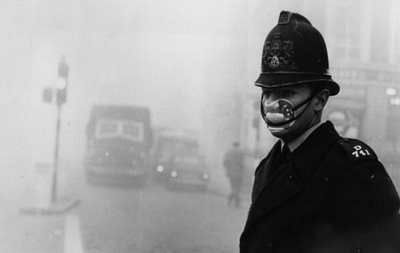Air pollution, a centuries-old problem
PDFMan has always cared about the air he breathes. It is from him that the deadly breath of the epidemic arrives. From Hippocrates to Pasteur, the impression is not denied.
In his treatise Airs, eaux, lieux, Hippocrates analyses the influence of winds on health, that of seasons on morphology and that of climate on the temperament of populations. In De rerum natura Lucretia observes that “each people has its own diseases (…), various effects of the difference of the air”. Climate theory induces among the neo-hippocrats of the Ancien Régime a reflection on morbidity and mortality. The link thus established between the disease and the weather conditions carries with it the old terror of the epidemic associated with putrid exhalations.
The association of corruption and death, and by extension putrefaction, is brought to its climax by the hygienists of the declining Ancien Régime who perceive the atmosphere as a cistern collecting miasma (miasma in Greek means defilement). In the purest hygienic tradition, the imperial decree of 15 October 1810, the first national text relating to industrial nuisances, is addressed to manufacturers spreading an “unhealthy or inconvenient smell”.

It was not until 1932 and the Morizet Law that the law truly incorporated other pollutants, fumes, soot and dust and toxic or corrosive gases. At the same time, pollution resulting from the increased use of coal for both domestic and industrial uses caused fatal smog episodes (a mixture of fog and smoke) due to adverse weather conditions. Thus, from 1 to 5 December 1930, a peak of sulphur dioxide pollution in a valley in the Meuse in Belgium caused sixty deaths. An equivalent excess mortality was observed in October 1948 in Donora, a small industrial town surrounded by high hills near Pittsburgh, Pennsylvania (USA), during a four-day sulphur pollution episode.
But it is above all the Great Smog of London (December 5-9 , 1952) which is of sinister memory since it is attributed with 4 ,000 to 12 ,000 deaths for an exposed population of about eight million people.




